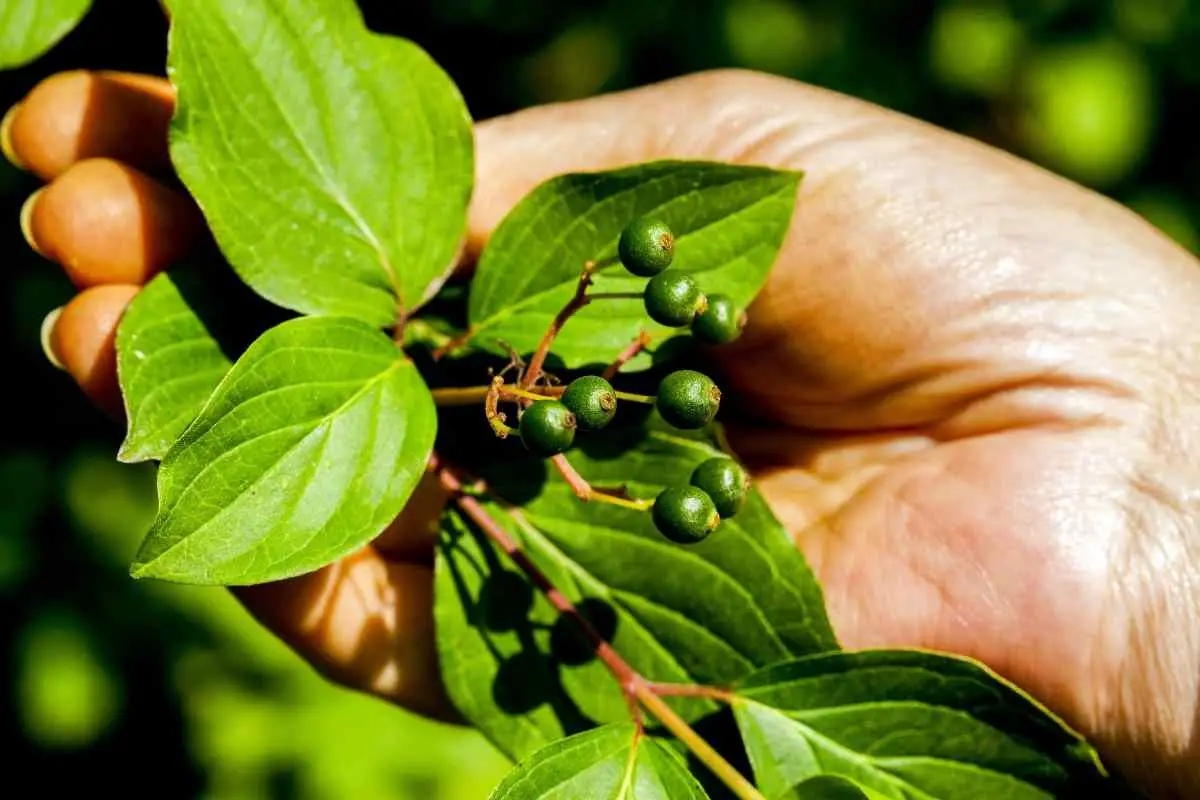When designing an outdoor landscape for your home, there’s a lot to consider.
From the layout and watering requirements, to how plants and trees change throughout the seasons.
Special consideration should also be taken when considering a tree’s root structure, as many species of trees can grow quickly and their roots may cause damage which can prove costly to repair.
The 5 best small trees with non invasive roots are the Adams crabapple tree, the English holly tree, the Amur maple tree, the American hornbeam tree, and the Dwarf plum tree. All of these tree species have root systems that either grow in shallow soil or do not strangle or destroy plant species or surrounding hardscaping features.
Do Your Research Before Planting Any Tree
Before choosing small trees for your garden landscaping, it is important to know how big the tree will grow and how far the root system will spread.
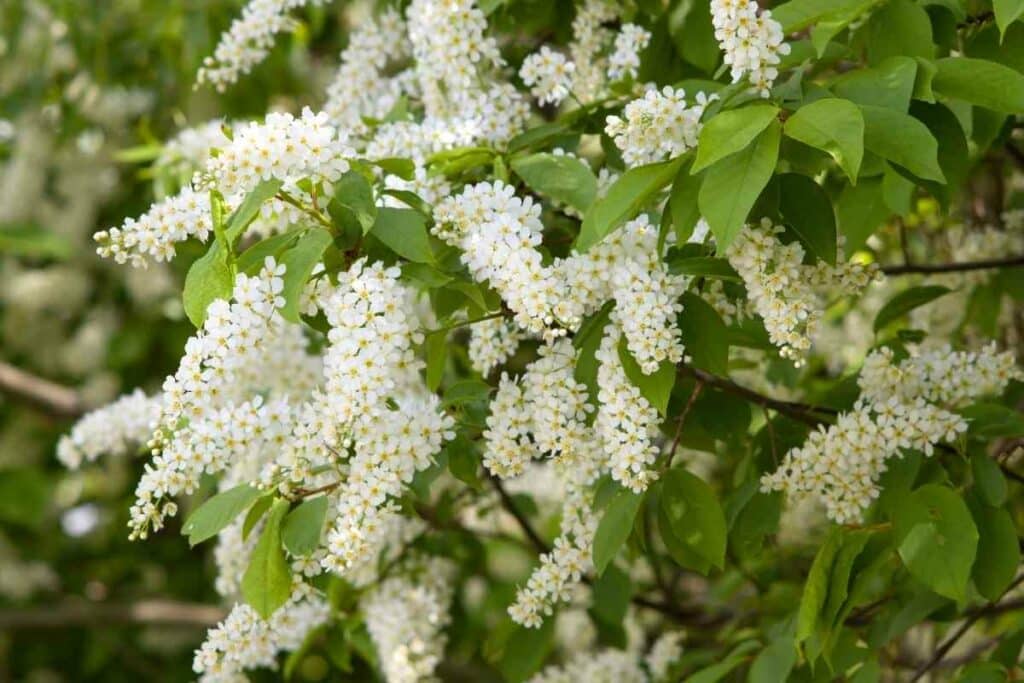
Research each plant species and speak with a nursery or landscape gardener before planting any tree, and avoid causing root damage to other plants, paving, underground pipework, or building structures nearby.
Trees with large lateral root systems are not always ideal for dense urban environments as their roots wander and can strangle other plant species.
Useful to Know: Plants with large wandering root systems are also a problem when planted too close to manmade infrastructure.
Root Systems of Trees
Tree root systems can be categorized into three varieties:
- tap root systems
- lateral root systems
- heart root systems (also known as oblique root systems)
Tap Root System
This type of root system has a primary root that drives downwards from the tree trunk and searches for a water supply to provide nutrients to the tree above ground.
Smaller lateral roots stem from the primary root. This type of root system is very sturdy and is found in many common tree species such as oaks, pines, hickory, sweetgum, tupelo, and walnut trees.
Lateral Root System
Much as the name suggests, this type of root system spreads out laterally and provides a strong base structure for the tree above.
A lateral root system is found in 80% of tree species, although given the widespread nature of the root system, these types of trees are not always suitable for urban environments.
Some common tree species that have a lateral root system include:
- ash
- birch
- cottonwood
- hackberry
- maple trees
Heart Root System
The heart root system (also called the oblique root system) provides tree stability by providing a root ball that is filled with soil.
The weight of the root ball anchors the above-ground portion of the tree and acts as a counterweight.
While this system is very sturdy in dry soil, it is prone to failure in wet soil or areas exposed to flooding.
Trees with a heart root system are commonly found in arid climates such as the Mediterranean.
Some common tree species found in the US with heart root systems include:
- honey locust trees
- red oak trees
- and sycamore trees
Top 5 Small Trees with Non-invasive Roots
Here’s our top pick of the best 5 small trees that are perfect for your backyard or landscaping project.
1. Adams Crabapple (Malus ‘Adams’)
Growing up to 20-25 feet tall and around the same in diameter, Adam’s crabapple is a broad-rounded deciduous tree that grows small edible fruits and offers a stunning display of pink flowers that bloom each spring.
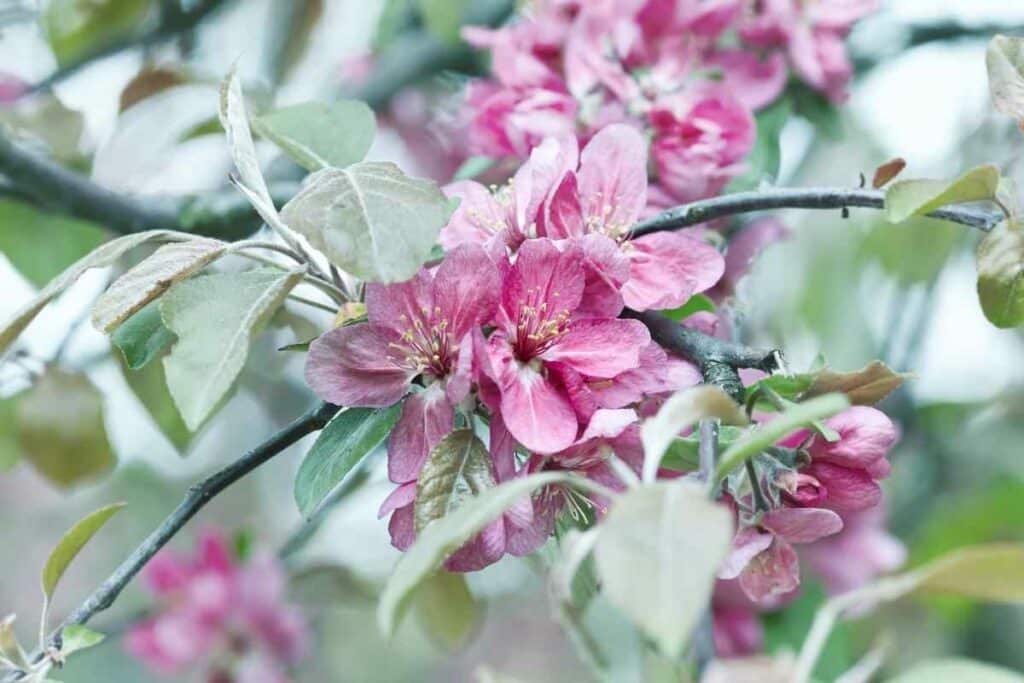
Crabapple Root System
Crabapple trees are considered a small tree species with a root system that is not invasive nor aggressive.
Crabapple roots are generally surface roots and grow in a lateral root structure, with a few sections that penetrate deep into the soil in search of water.
Remember This: Their root system does not normally damage hardscape features, although space your crabapple trees with enough distance for them to grow without crowding.
Spacing Your Crabapple Trees
You will still need to consider the spacing of your Crabapple trees and avoid planting them too close to hardscape features such as pathways, driveways, septic systems, and underground pipework.
2. Dwarf Plum Tree (Prunus domestica)
Also called the ‘Johnson’ plum, this small tree is perhaps the most modest on the list and only grows to around 8-10 feet tall when fully mature.

It’s a native of Japan, however is found all over Europe and North America and grows exceptionally well in USDA zones 5 through 9.
Throughout spring and summer, the tree grows edible fruit that has dark red skin and red or pink-colored flesh inside.
They are a hardy plant that prefers moisture-retentive clay or loam soil types.
Dwarf Plum Root System
Like most fruit trees, the dwarf plum uses a lateral root system and grows roots out in all directions in shallow soil.
The root will usually spread out around 8-10 feet for a fully mature tree and are not considered invasive to other plants or structures.
Spacing Your Dwarf Plum Trees
Dwarf plum trees thrive in bright direct light conditions and do not do well when overcrowded by other plants or trees.
If you’re planting them in your backyard, position them in a south-facing section where they will receive at least 6 hours of daylight each day.
Action to Be Taken: A single plant will require a fair amount of space of around 10-12 feet as a minimum. If planted in rows, allow at least 10-14 feet on all sides.
3. American Hornbeam (Carpinus caroliniana)
The American hornbeam (also known as the Musclewood or Ironwood) is a deciduous hardwood tree that grows up to 30 feet tall.
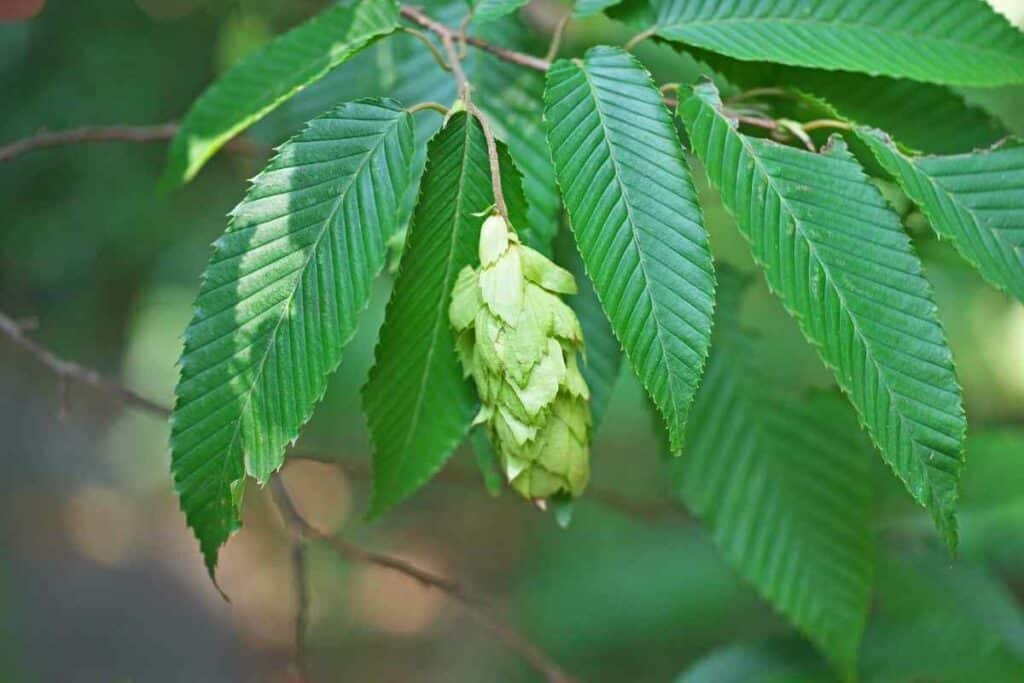
It is native to the eastern regions of North America and is a popular choice for urban landscaping environments as they thrive in moist soil, in naturalized areas, or when planted alongside streams or ponds.
American Hornbeam Root System
American hornbeams use a lateral root system that usually penetrates deep into the soil.
Their roots grow within shallow soil, spreading laterally, and in a wide-spreading manner.
The root system of the American hornbeam does not present major surface issues and are not considered invasive for other plant species or hardscape features.
Spacing Your American Hornbeam Trees In Your Backyard
While the root system is not overly invasive to plants or buildings, they still grow in a widespread manner.
Avoid crowding your American hornbeam trees and give them plenty of space to grow.
They are a stubby tree and will often have two or more forks on a trunk so give each tree at least 10 feet between any building or hardscape features such as a driveway or sidewalk.
4. English Holly (Ilex aquifolium)
The English holly (also called the Christmas or European holly) is a species of flowering broadleaf tree that grows up to 40 feet, although they are more commonly found as small trees around 10-15 feet tall in urban landscapes.
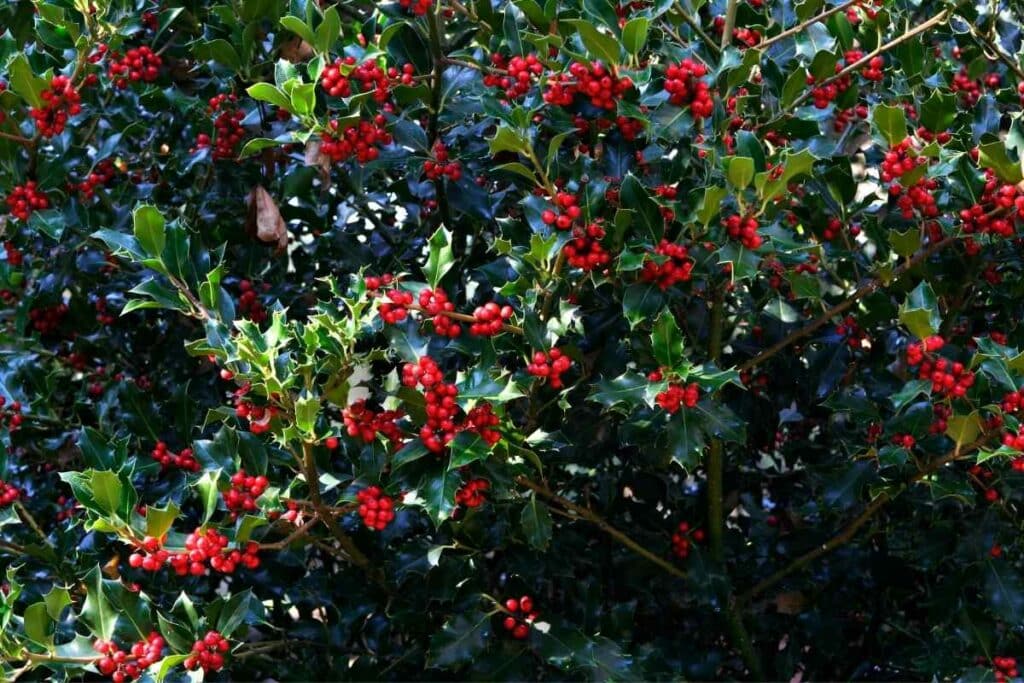
Holly trees exhibit dense, dark green leaves that have a slightly glossy texture and a spined edge.
Even Better: The female holly produces fragrant flowers in the summer which by fall transform into deep red colored berries.
English Holly Root System
English holly trees use a tap root system and have very deep, strong roots that grow between 17 – 25 inches below the surface.
The primary tap root will grow directly downwards from the main trunk of the shrub or tree and the root system is not considered overly invasive to other plant species.
However, the English holly root system can be somewhat destructive when planted above utilities, pipework, or sewerage systems as the strong roots will penetrate downwards and can cause significant damage.
Where to Plant Your English Holly Trees
English holly can be tamed as a shrub or made into a hedge, or alternatively can be grown as a small tree.
Depending on your landscaping design, you’ll want to space your English holly accordingly to accommodate for enough room to grow.
Avoid planting English holly too close to any pavements, sidewalks, or driveways, as the fruit can fall off and stain some surfaces.
If you’re planning to grow your holly into a small tree, allow between 8-10 feet between each tree.
English holly roots won’t be invasive to other plants nearby.
5. Amur Maple (Acer ginnala)
A native to Northeastern Asia, the Amur maple is a deciduous shrub or small tree that grows to 20 feet tall.
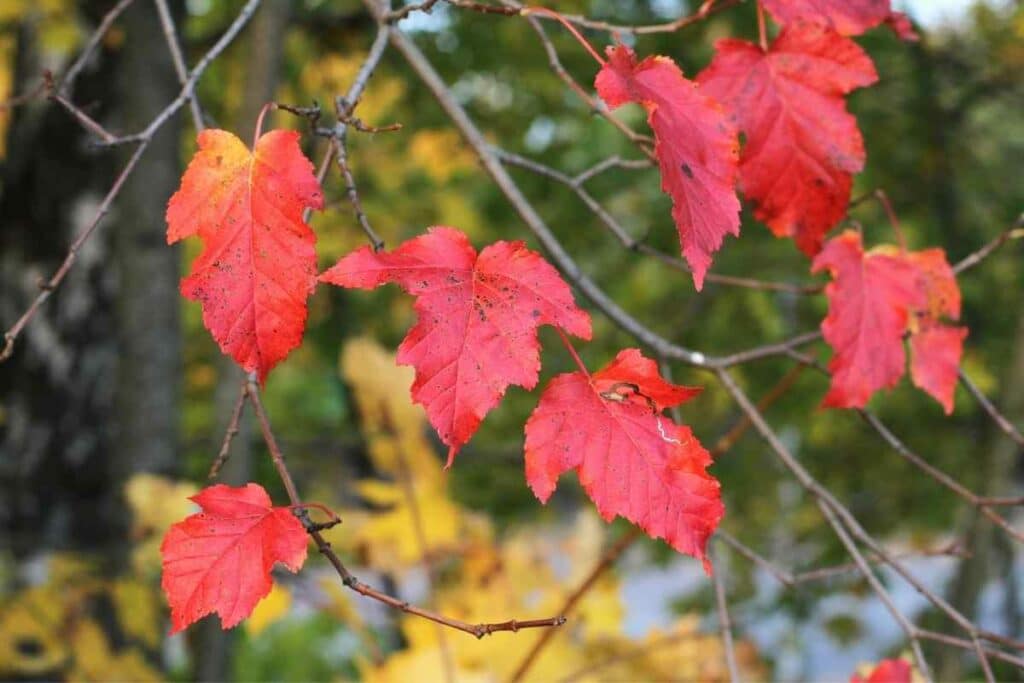
Each fall, the tree’s leaves change and exhibit a brilliant red color that fades to orange and yellow hues as the season advances.
Amur Maple Root System
Like all varieties of the maple tree, the Amur maple has a heart root system, made up of thin, shallow branching roots that are fibrous and non-invasive to other plant species and hardscape features.
Be Careful: Amur maple trees thrive in moist, well-drained soil, although due to their heart-shaped root system, they are prone to toppling in damp or overly wet soil.
Spacing Requirements for Amur Maple Trees
Leave at least 10 feet between each shrub and any hardscape features.
This will give ample space for the shrub to grow without causing any root damage to built features.
During fall, Amur maples lose all of their leaves, so avoid planting too close to paved surfaces or driveways as their deciduous leaves may stain some surfaces.
Never plant an Amur maple above septic tanks or other underground utilities as their root system may cause damage once the tree becomes fully grown.
Summary
It’s always wise to use tree species that do not have invasive root structures when designing your backyard or landscaping project.
Before planting any trees into your backyard, always research the size the plant will grow and how much space is recommended.
Avoid planting any tree too close to existing structures and be sure to check for any underground utilities such as sewer systems, septic tanks, or water pipes that could suffer costly damage from more mature tree roots.
Also Good to Read
- 8 Amazing Ideas What to Replace a Pond With (Images)
- 9 Plants That Repel Flies
- 21 Succulent Bowl Planting Design Ideas
